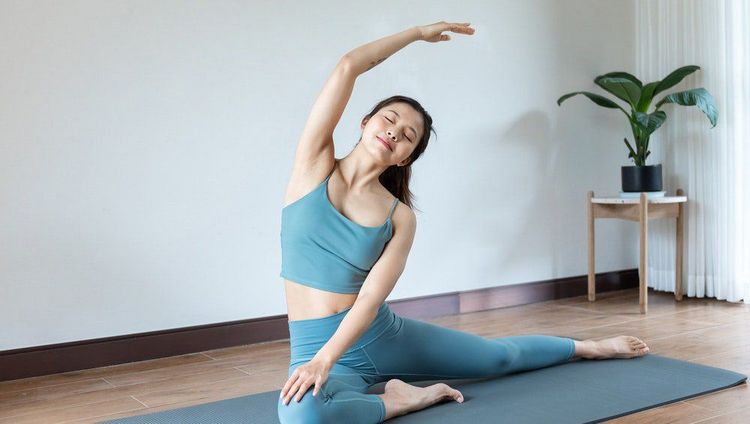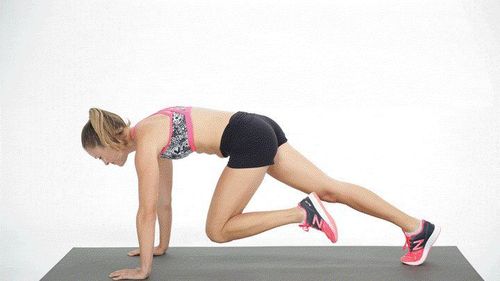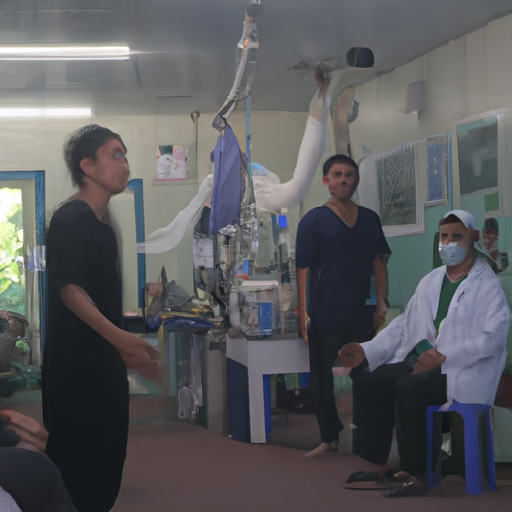Share knowledge
Advice on yoga for all levels
It is time to launch your yoga mat and discover a combination of physical and mental exercises. Whether young or old, overweight, obesity sickly, Yoga has the ability to soothe the mind and enhance your body health. Do not be afraid of yoga terms, Luxury yoga rooms and complex postures. Yoga for everyone. Here are some useful tips on yoga for all levels.
1. How to start with yoga, And just practice yoga should practice ?
Yoga is a common form of training worldwide combining breathing adjustment, Movement and meditation. Yoga introduced into the United States from India more than a century ago, Yoga has long been praised for the physical and mental benefits that they can bring.
Research shows that yoga can help control stress, Reduce depression and anxiety, Improve mood, advanced Quality of sleep. Besides, Yoga has been shown to increase flexibility, Improve balance and coordination, Relieve pain and increase muscle strength.
Joining the Yoga class for the first time seemed too much for some people, But it is not worrying if we know their mechanisms of activity. A typical yoga class lasts from the range 45 minute 90 minute. Depending on the teacher and the teaching style, It usually starts by focusing on breath, Switch to postures called asana for most classrooms, And sometimes end with meditation to help cool down.
1.1. How to start with some yoga classes
The best way to learn yoga is to practice, But if you are worried about joining a classroom, Do not be afraid to learn a bit about theory before participating. Consider the following:
Yoga classes:
Classes have many different yoga styles, So you should read the class description at your local yoga rooms to find the class that suits you. Common types include:
- Hatha Yoga classes tend to be good for beginners because they move more slowly and the movements are also softer.
- VINYASA classes, Ashtanga and Yoga power may be more difficult, Depending on the level of instructions of the lecturers.
- Iyengar is very focused on appropriate alignment and often use props to help students perfect their form..
- Hot yoga is a form of yoga practice practice in hot temperature conditions – Many gyms come 40 độ C. Many people like yoga in hot temperatures, But those who are sensitive to heat or some pathologies can see hot yoga uncomfortable.
- Kundalini Yoga is the term “A spiritual or vigilant energy is located at the bottom of the spine.” Trong kundalini yoga, The practitioner uses breathing exercises, Physical posture, Chanting and meditation to clear this energy. Kundalini Yoga has been known to support detoxification for patients drug addiction.
1.2. Equipment used for yoga exercises
Most yoga classes encourage students to bring yoga carpets to class, But if you don't have your own carpet, The class is often available to rent for a small fee. Yoga and gym classes often provide all equipment and props that students need, Including pads, blocks and blankets.
If you intend to practice yoga at home, You can buy some basic dishes or find things that can be replaced right in your home before starting. For example: You can use your belt or scarf instead of yoga straps and pillows or a solid cardboard book for yoga blocks.
1.3 Costumes wearing yoga
Choose pants or shorts so that it feels comfortable, Elasticity and tight shirt so that you don't get hooded on your head every time you perform the upside down. The practitioner will not need special shoes because yoga is usually done by bare feet. The practitioner can also bring a pair of yoga socks with straps at the bottom to keep the feet from sliding on the carpet.

1.4. Choose a yoga class
The traditional yoga rooms are where students wish to study. But they are not the only available choice to guide. And always exist advantages and disadvantages for each type of gym.
- Gym (or gym): Nowadays, almost all large gyms open yoga classes. If already a member of the gym, You can regularly participate in classes without having to pay extra. Many of these instructors are highly qualified, However in some cases, The practitioner may also have to work with some new instructors who are trying to build their experiences and skills.
- Yoga gym: Often the place to focus highly qualified guides, People focus mainly on yoga, Most of the gym also offers many classes arranged throughout the day. However, Yoga rooms tend to be more expensive and for some people, They may feel uncomfortable when they go to the yoga room.
- At home: With the available smartphone and online video services, Complete people can access online classes from anywhere. Online classes or guidelines are a great and affordable option for those who do not have the conditions for direct guidance., Or those who want to practice before joining a class.
2. Advice on simple yoga postures for all levels to prolong and improve health
Yoga is not difficult. A person just walked out of bed in the morning and stretched his arms through his head, It was a posture in yoga exercises. Yoga introduces muscle stretching skills to have a balanced body and true feeling of positions in the body.. Our bodies bend and fold naturally in postures. String 10 The posture below looks simple but will last and strengthen the main muscle groups of the practitioner.
2.1. Climbing posture (Tadasana)
In the climbing position, There are many things happening, Although it may look like the practitioner is just standing normally. Heel down, The muscles of the foot activity, The bone stacked on the shoulder directly through the hip, The shoulder blades slide down and the top of the head protruding. Do not forget to breathe evenly according to the episode.

2.2. Hand -raising posture (Urdhva Hastasana)
Inhale and put your arm slowly to your head. The posture of raising hands is the basic posture in the morning of each person, But focus on keeping the good link that you have set in the mountain climbing position. Hold the heel and keep the shoulder moving out of the ear at the same time as the fingers. Your gaze may be directed to your hand, It can be as wide as the shoulders or palms touching each other.
2.3. Bow forward (Uttanasana)
Breathe out and fold your legs to form a folding posture forward. If you first feel a bit tight, Bend your knees to be able to relax the spine. To heavy heads. Keep your legs bent gently with your hips wide to stabilize (Can straighten legs, but not necessary). You can use your hands to grasp the elbows tightly while swaying gently to the sides.
2.4. POSITION (Malasana)
Move your feet to the edge of the carpet and bend your knees to become a squatting position. The toes can turn out if necessary. If your heels do not touch the floor, You can sit on two yoga blocks overlapping. This amendment makes the wreath more accessible to many people. This is a pretty natural posture for children, But we are easy to lose when growing up. It is very good for hips and against the effects of sitting too much in the seat and sitting in a car. This is also a very useful posture if you like gardening.
2.5. Lunge posture
From the wreath posture, Back to a folding posture forward with your legs bent gently and set your hips. Khi bạn đã sẵn sàng, Your left foot step back of the carpet and bend your right knee for a deep inhalation. Try to bring your curved knee directly through the ankle so that your right thigh is parallel to the floor. Feel free to put your hands on the blocks to bring you the floor. Hold your left and strong left legs with heels reaching out. If too tight, you can lower your left knee on the carpet. Keep 5 nhịp thở trước khi đưa chân trái trở lại mặt trước của tấm thảm bên cạnh chân phải. Sau đó lặp lại động tác lunge với chân trái về phía trước và chân phải ra sau.

2.6. Tư thế tấm ván (Plank)
Sau lần lắc thứ hai thì bạn bước chân trái về phía sau tấm thảm. Bàn chân phải cách nhau rộng bằng hông. The right hip is equal to the shoulder. This is a classic preparation with one push. Keep the inner posture 5 The breathing also ensures that the hips do not lower too low or increase too high. If the elbow tends to stretch, Bend your elbows. Knee if needed. After five breathing, Let your knees down the carpet and return to the position of sitting on the heel and rest for a moment.
2.7. Staff posture (Dandasana)
After regaining the breath, Turn your feet so that they are spread in front of them. Staff posture is the sitting posture equivalent to the mountain posture, It seems very simple but there are many benefits for practitioners. Healthy legs with folding feet. Her husband's shoulder through the hip so that the spine is long and straight. The arm may be straight or slightly curved.
2.8. Bow to the front when sitting (Paschimottanasana)
When you exhale, Then bring the body through the legs in a bending position. Allows gently bending your knees to keep this position simple and easy to control. Try to adjust the breath, Extend the spine in each inhalation and create folds forward for each exhalation. Keep the breath in the year, Keep the foot flexible.
2.9. Knee posture (Janu sirsasana)
Back to sit and bend your left leg, Then bring the left foot to the right thigh. Use the same technique described above to deepen your posture in your breath. After five breathing, Sit up and change legs.
2.10. Happy baby posture (Ananda Balasana)
Lie on your back and hug your knees to your chest. Bend at the waist sincerely 1 corner 90 degree. Fold your feet and hold them from outside when you pull your knees down to the armpit. This is a happy baby posture. Roll from side to side a little on the bone if you feel comfortable. After five breathing, you straighten your legs on the floor and rest.
For those who are new to yoga or plan to practice yoga, Maybe they have heard a lot of things that others say about this issue. However, the fact is that yoga is not only for women. You don't need a flexible body to practice yoga. Yoga is not a religion, It is not too difficult or too easy to practice. Yoga is for everyone at all levels and it can be suitable for all lifestyles. Nếu sẵn sàng để luyện tập, chúng ta sẽ khám phá ra rằng yoga có thể dàng hòa nhập như thế nào.
Để đặt lịch khám tại viện, Quý khách vui lòng bấm số HOTLINE hoặc đặt lịch trực tiếp TẠI ĐÂY. Tải và đặt lịch khám tự động trên ứng dụng MyVinmec để quản lý, theo dõi lịch và đặt hẹn mọi lúc mọi nơi ngay trên ứng dụng.
Posts with the same topic:
-
“Sao mình không đủ mạnh mẽ như người khác?”
-
Mình ghét chính mình lắm…
-
Khám Phá Lối Sống Lành Mạnh Kết Hợp Với Yoga
-
Chăm Sóc Sức Khỏe Tinh Thần Cho Mẹ Bỉm Sau Sinh
-
Khám Phá Sự Thú Vị Của Tâm Lý Học Hành Vi
-
Khám phá tâm lý tuổi vị thành niên: Thách thức và cơ hội
-
Tìm Về Tâm Thân An: Nghệ Thuật Sống Thảnh Thơi Qua Cốt Lược Kiều
-
Signs you need to disclose (Coaching) - When to start the journey to discover yourself?
-
Khi Cảm Xúc Mất Kiểm Soát: Nhận Diện Tình Trạng Và Hồi Phục Tinh Thần Cùng Coach Lựu Kiều
-
Đừng cố mạnh mẽ nữa – Đây là lúc bạn cần chăm sóc chính mình
-
Làm Sao Biết Mình Đang Bất Ổn Tinh Thần? 5 Dấu Hiệu Dễ Nhận Ra Mà Thường Bỏ Qua
-
Manage emotions and methods to help manage emotions effectively
-
What is meditation? 12 The benefits of meditation are based on science












